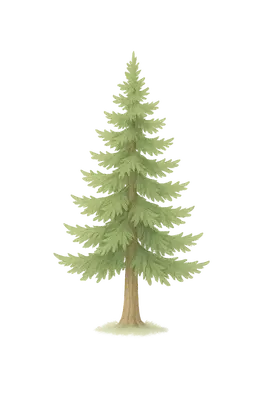Japanese Cypress (Tree)
Description
The Japanese cypress (Chamaecyparis obtusa), known as “Hinoki” in Japan, is an evergreen coniferous tree valued for its high-quality timber and aromatic wood. It features soft, scale-like leaves and small, spherical cones. The tree is commonly used in construction, particularly for temples and shrines, due to its durability and pleasant fragrance.

Allergy Symptoms
Exposure to Japanese cypress pollen can cause allergic reactions, including:
- Nasal symptoms: Sneezing, runny or congested nose.
- Ocular symptoms: Itchy, watery, and red eyes.
- Respiratory issues: Coughing, wheezing, and exacerbation of asthma symptoms.
Approximately 70% of individuals with Japanese cedar pollinosis also experience symptoms during the Japanese cypress pollen season, indicating significant cross-reactivity between the two pollen types.
Typical Pollination Period
Japanese cypress trees typically release pollen from March through early May, following the Japanese cedar pollination season.
Geographic Distribution
Japanese cypress trees are primarily found in:
- Japan: Native and widely cultivated throughout the country.
- Other regions: Planted in parts of East Asia and occasionally in other temperate regions for ornamental purposes.
Tips for Reducing Exposure and Managing Allergies
- Monitor pollen forecasts: Stay informed about local Japanese cypress pollen levels during the pollination season.
- Limit outdoor activities: Especially on high pollen count days and during morning hours when pollen levels are typically higher.
- Protect indoor environments: Keep windows closed and use air purifiers to reduce indoor pollen exposure.
- Personal hygiene: Shower and change clothes after being outdoors to remove pollen.
- Medication: Use antihistamines, nasal corticosteroids, or other allergy medications as recommended by a healthcare professional.
- Consult an allergist: For persistent or severe symptoms, seek advice from an allergist who may recommend immunotherapy or other treatments.